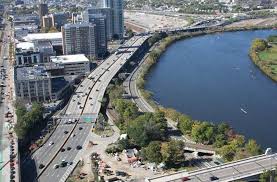The Allston Multibillion-dollar highway project that is projected to be the biggest road construction project in the Boston area and has taken over 10 years in planning has recently received new design plans that will add landmarks to the Allston infrastructure. The state transportation ministers are considering the new design plans along with two other suggestions that were brought forward. The key deadline for the project is approaching and the decision needs to be made soon however details concerning the new design have not been released yet.
Also Read: China to strengthen high-tech application in road construction.
The Allston Project is a project that is expected to tackle different transportation aims that the state has such as walking paths, rail tracks fro commute and the construction of a highway. However, the project faces a hurdle that is; it is a mere 62 metres away from the Boston river and on the opposite side, there is Boston University. These two obstructions mean that the planned 12 lane highway, walking paths and railway have to be constructed in the most efficient way to maximise the space.
Under the proposal, MassDOT would replace the structurally deficient viaduct carrying the Mass Pike between Boston University and the Charles River with a smaller new viaduct that still supports eight lanes for the commute. Commuter rail trains would run below the highway, while Soldiers Field Road would be built at ground level, away from the river by pedestrian and bicycle paths. Senate President Karen Spilka, D-Ashland, said she is still worried about the effect of the project on MetroWest residents and the ripples throughout the state. “I emphasized that any plan must be viewed as an opportunity to include increased reliability, frequency and affordably on the commuter rail during the construction and after; take into account the unfair financial burden already placed on MetroWest commuters by the turnpike tolls; and actively provide increased short-term commuting options and improve the long-term experience for both drivers and users of public transportation,” Spilka said in a written statement.

